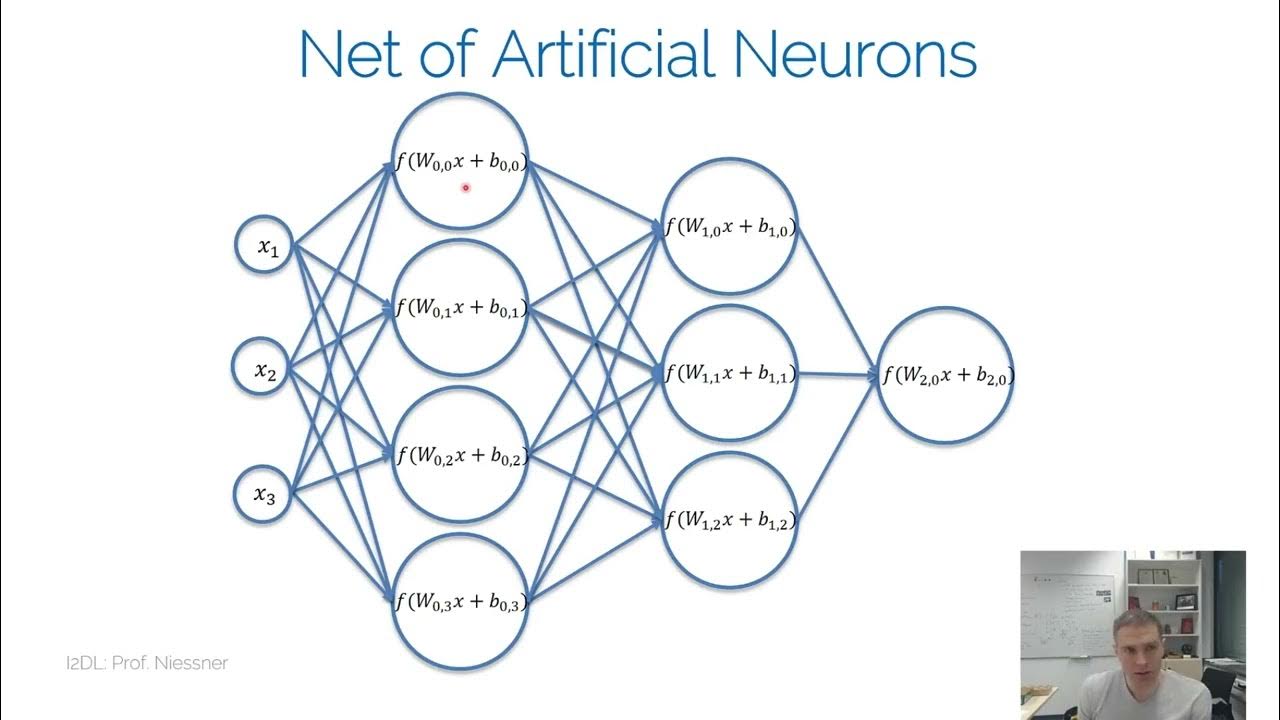Autoencoder Explained - Deep Neural Networks
Summary
TLDRThe video script discusses the introduction of a product that leverages neural networks for data representation and manipulation. It covers the importance of understanding computer architecture and the concept of not dividing food into parts, suggesting a focus on the whole. The script touches on the potential of neural networks in various applications, the challenges of data labeling, and the significance of using normal data for model training. It also emphasizes the need for a balance between compression and reconstruction in image processing, highlighting the advancements in encoder technology and the impact on data analysis.
Takeaways
- 😀 The video introduces a product that uses AI and neural networks for tasks such as data encoding and reconstruction.
- 🔍 The product is designed to handle unsupervised learning, which means it can process data without the need for labeled examples.
- 📈 It emphasizes the importance of understanding the architecture and how food is not divided into parts, suggesting a focus on holistic data analysis.
- 📚 The script mentions the product's ability to subscribe to a state with nothing but lower-dimensional representation, indicating a reduction in data complexity.
- 💡 The video discusses the concept of 'importancy' and 'identity function', hinting at the product's capability to identify and prioritize key data points.
- 🌐 It touches on the idea of 'non-linear space' and the compression of data, suggesting advanced techniques for data handling and storage.
- 🔧 The product seems to offer a tool for data reconstruction, which could be useful for tasks that require data to be reformatted or reorganized.
- 🔑 The script refers to a 'simple PCP', which might be a method or algorithm that enhances the product's performance in processing data.
- 🛠️ There's an emphasis on the use of a 'smart pen tool' for data generation, indicating a feature that could aid in creating or annotating datasets.
- 🔒 The video mentions the need for data protection and the importance of compression rights, suggesting features that secure and manage data efficiently.
- 🔬 Lastly, the script hints at the product's potential applications in various fields, including medical imaging and anomaly detection, showcasing its versatility.
Q & A
What is the video primarily discussing?
-The video is primarily discussing the concept of data compression and encoding, focusing on techniques like Principal Component Analysis (PCA) and neural networks used in image compression and anomaly detection.
What is Principal Component Analysis (PCA) used for?
-PCA is used for dimensionality reduction, where it helps in representing data in a lower-dimensional space while retaining as much information as possible. It's particularly useful in data compression and reducing the complexity of models.
How do neural networks relate to data compression?
-Neural networks can be employed for data compression by encoding the data into a lower-dimensional space, reconstructing it later with minimal loss of information. This technique is useful in image processing and other applications requiring efficient data storage.
What does the term 'anomaly detection' refer to in this context?
-Anomaly detection refers to identifying patterns in data that deviate from the expected behavior. In this context, it involves using models trained on normal data to detect outliers or unusual instances that might indicate issues or abnormalities.
Why is it important to minimize the difference between the input and output data during reconstruction?
-Minimizing the difference between input and output data during reconstruction ensures that the compressed data retains its original quality and integrity as much as possible, which is crucial for accurate representation and analysis.
What are the potential challenges in labeling data for these models?
-Labeling data can be challenging due to the high cost and effort involved, especially when dealing with large datasets. Additionally, it can be difficult to accurately label complex data, leading to potential errors in model training and evaluation.
How does the use of normal data impact model training in anomaly detection?
-Using normal data to train models in anomaly detection allows the model to learn what constitutes typical behavior, making it easier to identify deviations or anomalies during actual deployment.
What is the significance of dimensionality reduction in computer architecture?
-Dimensionality reduction simplifies the data, making it easier to process and analyze, which is essential in computer architecture for improving computational efficiency and reducing resource consumption.
How do PCA and neural networks complement each other in data processing?
-PCA and neural networks can complement each other by combining the strengths of both methods. PCA reduces data dimensions, while neural networks can further process the compressed data, enhancing the overall efficiency and accuracy of data analysis.
What is the importance of reconstruction in image processing?
-Reconstruction in image processing is crucial as it ensures that the compressed or encoded images are restored to their original form as accurately as possible. This is important for maintaining image quality and usability in various applications.
Outlines

هذا القسم متوفر فقط للمشتركين. يرجى الترقية للوصول إلى هذه الميزة.
قم بالترقية الآنMindmap

هذا القسم متوفر فقط للمشتركين. يرجى الترقية للوصول إلى هذه الميزة.
قم بالترقية الآنKeywords

هذا القسم متوفر فقط للمشتركين. يرجى الترقية للوصول إلى هذه الميزة.
قم بالترقية الآنHighlights

هذا القسم متوفر فقط للمشتركين. يرجى الترقية للوصول إلى هذه الميزة.
قم بالترقية الآنTranscripts

هذا القسم متوفر فقط للمشتركين. يرجى الترقية للوصول إلى هذه الميزة.
قم بالترقية الآن5.0 / 5 (0 votes)






